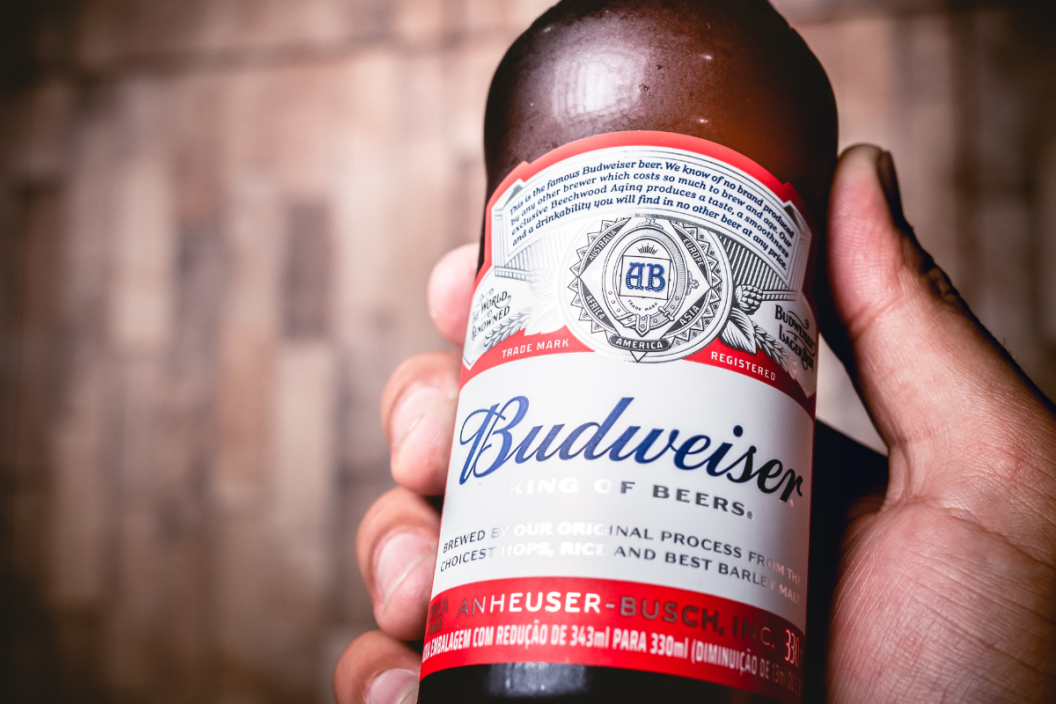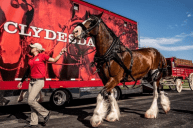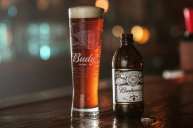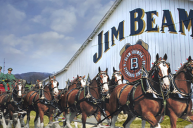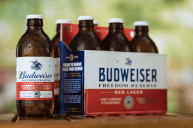Budweiser rivals the Super Bowl, apple pie, July 4th barbecues, and Thanksgiving at Grandma's for the top spot among American cultural icons. But how much do you actually know about the famous American lager?
Videos by Wide Open Country
It might be less than you think. Pull up a barstool, lawn chair, or stoop, crack open a cold one, and check out these 10 little-known Budweiser facts:
1. Budweiser was actually created by Germans.
https://www.instagram.com/p/CPs14y3BuAO/
Budweiser might feel like quintessential Americana, but its roots are more complicated than you might think. Budweiser's story begins in the mid-19th century, when a wave of German immigration brought with it a wealth of brewing expertise and love of beer.
Many of these immigrants, including Adolphus Busch, landed in the St. Louis area. He soon met and married Lily Anheuser, whose father, Eberhard, happened to own a brewery. And voila, the foundations of an American institution were laid.
2. Budweiser had a slippery start.
Eberhard Anheuser got his start in manufacturing with soap and candles. Within a decade of immigrating to the U.S., he owned the largest candle and soap manufacturer in St. Louis.
Despite a total lack of experience, Anheuser jumped into the brewery business in 1852, buying the Bavarian Brewery. A short eight years later, he had bought out the other owners, assumed full ownership and renamed his brewery Anheuser-Busch.
Anheuser-Busch Brewery, now known as AB inbev, owns many of the best-selling beer brands in the States including Bud Light, Corona, Stella Artois, Becks, Modelo, Michelob Ultra, Natural Light, Busch, and Shock Top. Anheuser-Busch inbev has also bought various craft beer companies in the US.
3. The secret ingredient in Budweiser is rice.
Nearly 150 years after Budweiser beer began quenching America's thirst as the King of Beers, Anheuser-Busch revealed the five sort-of secret ingredients behind this American brew. For more than a century, Budweiser has relied on these five ingredients:
- Water
- Barley malt
- Yeast
- Hops
- Rice
Though most of these ingredients are considered pretty standard, rice came as a surprise and caused the real stir among beer-enthusiasts.
4. Budweiser was a trendsetter.
Styled as an "American Lager", Budweiser broke the mold in an era when most Americans drank locally brewed dark ales. Once Budweiser reached markets around the country, drinkers developed a taste for the crisp, drinkability of a lager-style beer.
5. Budweiser wasn't the only Budweiser.
Budweiser brewers chose a name that paid homage to a region of Czechoslovakia known for serving similar pale lagers for centuries - Buweis. Here's the thing: there already was a beer called Budweis from Budweiser. For that reason, in Europe, it is officially just "Bud" instead.
6. Budweiser didn't stop for prohibition.
Only 54 years after Budweiser first touched Americans' lips in 1876, the 18th Amendment to the U.S. Constitution banned the sale of alcohol. Prohibition lasted 13 long and thirsty years. How did a company dedicated to the manufacture and sale of alcohol survive a decade-plus of prohibition?
Anticipating prohibition's onset, Anheuser-Busch developed products like Bevo—an alcohol-free, cereal-based beverage—in the years preceding prohibition. They sold sodas and even tried brewing up their own ice cream.
Thankfully for Budweiser—and thirsty, sober Americans—public opinion swung back in favor of alcohol and the 18th Amendment was repealed on April 17th, 1933.
7. Budweiser was the first beer to use pasteurization...
Milk and Budweiser might make for a stomach-curdling combination, but Budweiser played a vital role in developing the pasteurization process associated with milk. Determined to expand beyond their St. Louis origins, Adolphus Busch needed a means of ensuring his product was fresh and delicious when it arrived after long cross-country journeys.
Budweiser relied on pasteurization to keep fresh on long trips way before the dairy industry started using the method to disinfect milk. Freshness is still a hallmark of Budweiser today, and every beer is printed with a "best-by" date.
8. ...and was one of the first beers to travel via refrigerated railcars.
Refrigerated railcars were another industrial-era innovation in which Budweiser played an integral role. These icy-cold rolling transports let Budweiser deliver fresh and cold beers around the country to people whose only beer choices long had been Joe from down the street's dark ale or Johnny from up the other street's dark ale.
This disrupted local markets and opened all the space Budweiser would need to shoulder in. With a refrigerated national transportation network, Budweiser earned a leg up on the prospective national competitors, and its popularity exploded.
9. Not just any Clydesdale can be a Budweiser Clydesdale.
Clydesdales are part and parcel with the Budweiser brand. These iconic horses have starred in Super Bowl commercials and advertising campaigns for decades. Budweiser Clydesdales must satisfy these strict aesthetic standards.
- 72 inches tall
- Gelding 4 years or older
- Between 1800 - 2300 lbs
- White blaze and legs
- Black mane and tail
10. Brewmasters around the world got their start at Budweiser.
Anheuser-Busch employs thousands of brewers worldwide. Although they might be loathed to admit so now, the origins of many successful micro and boutique breweries lay with Budweiser.
Many would-be brewmasters with dreams of their own breweries got their start in the beer business with Anheuser-Busch.
